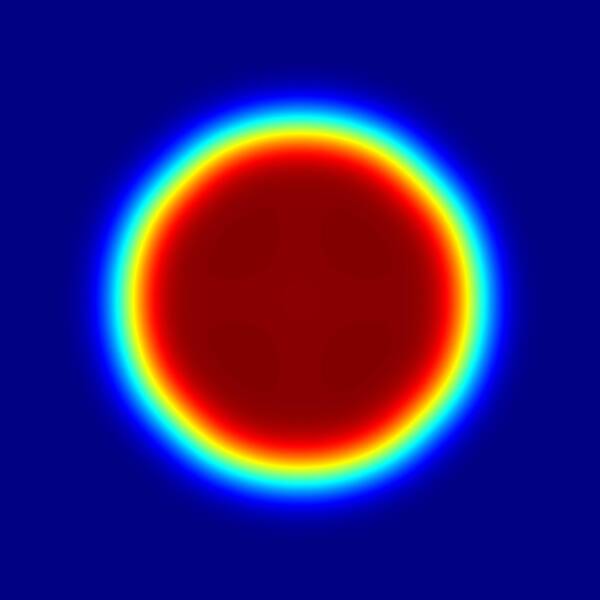Diffractive Optical Elements, or DOEs, are a very unique family of optical elements that are used in optical systems to introduce complex transformations to the optical beam that otherwise could not be done with conventional optical elements. Diffractive Optical Elements work by exploiting the wave properties of light beams which is in contrast to geometrical optics that treats a light beam simply as a pencil of rays.
Thus, a diffractive optical element is a surface element that imparts a pre-designed local phase delay across the wavefront of an input beam. Then, by the natural process of beam propagation and interference, a new wave envelope or beam distribution arises. The shape of this new beam is directly related to the different values given to the phase delays in the array of elements at the DOE plane. That relation is given by a mathematical formalism which can be traced back to the wave diffraction integral after some simplifications and approximations. The crucial thing to consider is that this mathematical relation is well known and therefore it provides a powerful design methodology for obtaining a myriad of optical transformations.
A DOE can be used to transform the radiance from an input beam into something that is more convenient for the specific application at hand. For instance, the output beam can be a Flat Top, or Top Hat, beam which will improve the system efficiency as the uniformity is better and light losses around the laser treated area are reduced. Furthermore, the actual shape of the beam is not constrained to the shape of the input beam. This means that the output beam can be circular, rectangular or any other desired geometrical shape. Some other more complex patterns can be obtained such as parallel or perpendicular lines.
Diffractive optical elements are also used for beam splitting or fan out operations. In this application, the input beam is split into an array of output beams which all share the same characteristics as the input beam (diameter, divergence, profile, etc) .
Another name for DOE in older technical literature is Computer Generated Holograms, or CGHs. This arises from historical methods of producing DOE. The first diffractive elements were holographic optical elements, generated by interfering several beams on a photo-sensetive material to achieve the desired phase profile. This process creates a hologram, i.e a phase structure in the bulk of a transparent material. When the first DOEs phase profile were designed by computer, they were thus called CGHs.
TechnologyHQ is a platform about business insights, tech, 4IR, digital transformation, AI, Blockchain, Cybersecurity, and social media for businesses.
We manage social media groups with more than 200,000 members with almost 100% engagement.











































